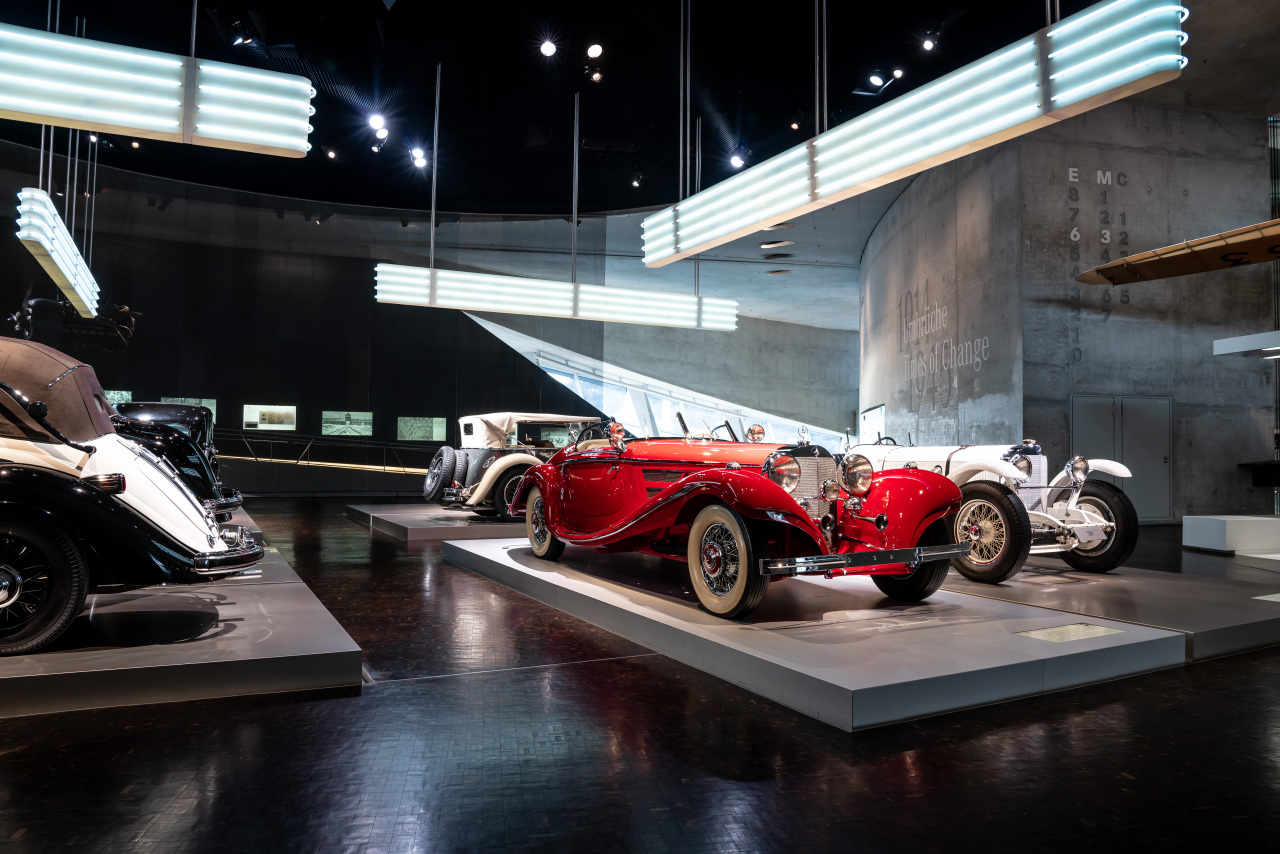am 08.10.2021 - 09:16 Uhr
From the very beginning, it is a pleasant immersion in the rapid and increasingly efficient development of the global corporation's vehicle range. This is where the past, with today's slightly smiling first driving experiments, meets state-of-the-art cars and exciting future scenarios. In the Mercedes-Benz Museum in Stuttgart, a sensational architecture, changing exhibitions, multimedia and complex lighting technology provide a journey through the history of the company and the automobile. The changing lighting scenarios in the exhibitions are controlled by the B-CON building management software from the Idar-Oberstein-based company ICONAG.
Directly in front of the main gate of the plant in Untertürkheim lies this futuristic-looking building, which at first glance does not suggest a museum. And yet Mercedes-Benz brings to life here the more than 130-year history of the automobile and thus also its own corporate history. On a total of 16,500 m² of exhibition space, there are 1,500 exhibits that impressively describe engineering and research history. 160 vehicles, from the first three-wheeled, gas-powered Benz Patent Motor Car from 1886, to commercial vehicles, sports cars and limousines, to research vehicles are the centerpiece of the chronologically and thematically presented collection, which also includes vehicles of famous owners and, of course, the legendary Mercedes Silver Arrows. A fascinating presentation embedded in an unusual structure designed by Amsterdam architect Ben van Berkel.

Around an atrium at the core of the 47.5-meter-high building, two sloping levels wind their way down from the top to the exit over a total of 9 floors, based on the shape of a DNA double helix. Via the resulting two tours, Mythos and Collection, visitors are guided through the extensive collection in wide curves spanning all time periods. Visitors can switch between the different tours at any time. Not only the building itself, but also the elaborate type of presentation with changing exhibitions and special shows, changing light scenarios and multimedia presentations place high demands on the control of the building technology and require special and individual solutions that go far beyond the standard.
For the renewal and modernization of the lighting control system, which had become obsolete since the opening in 2006, the company SYS.TEC. Gebäudeautomation GmbH & Co. KG from Holzgerlingen in Baden-Württemberg, Germany, developed a solution that was individually tailored to the museum's requirements, based on the B-CON Building Management Software in conjunction with controllers from WAGO. A core task and, at the same time, a special challenge of the system was scenario management. This makes it possible to use mobile tablets to optimally illuminate and stage the exhibits on site - even decentrally during ongoing presentations and events. The basis for the realization of this requirement was a complete reprogramming of the lighting control system with extensions and improvements based on the WAGO system.



With the specially developed decentralized control unit, with which each element of the lighting and presentation technology can be controlled on site at the exhibition object via Windows tablets, and the result can be saved as a scenario in the WAGO controller. In this way, the entire museum lighting with a total of 12,400 lights and the various lighting scenarios in the exhibition areas, as well as all screens, media sockets, media players, Apple TV, and the beamers on the elevators can be integrated into the presentation scenarios. The so-called Brand Space is used for the optimal presentation of the various Group brands. During ongoing events, in addition to setting the color and lighting scenes, an LED wall including the complete media technology such as film and sound elements can also be included in the mobile scenario management.
In order to ensure stable functioning of the scene control, all old controllers had to be replaced with new WAGO controllers, and the numerous newly added interfaces had to be integrated into the WAGO system. At the same time, the museum's operation was not to be impaired by the work. Thus, the conversion of all control cabinets took place during ongoing operation and also at night, so that a total of only one day of rest was required in the museum.
The result is a multimedia presentation of the Mercedes world that can be operated easily, efficiently and comfortably and at the same time enchants visitors time and again.

Powered by ModuleStudio 1.3.2